Man has been building dams since the dawn of time to retain water in rivers for irrigation and in order to meet domestic water needs. In more recent times the additional need for energy has further driven the need for dams to drive industrial growth and light homes. With rising population numbers and a drive for industrialization, Africa has come under pressure on resources and the need for water has not been an exception. In Africa a recent count put the number of dams in Sub-Saharan Africa at a total of 980 large dams with around 589 of them in South Africa; among them Africa’s largest dams.
The continent of Africa in the last decade has seen a resurgence in construction of massive dams in order to supply more regulated water and to generate hydroelectricity. Most of these dams have been located along the Nile and more specifically in Ethiopia. The choice of Ethiopia becomes all too obvious when you examine the countries mountainous region and abundance of rivers that offer ideal locations for dam construction. The country is not called Africa’s water tower for no reason.
Estimates put Ethiopia’s potential for harnessing its hydro potential at only 1% at the turn of the century and this means there will be a lot more dams to come in the future. Some would argue that the country is set to become Africa’s power house. In the meantime under construction in Ethiopia is Africa’s largest hydro-electric dam and already completed is Africa’s largest Arch Dam.
Africa’s largest dam

The Grand Ethiopian Renaissance Dam (GERD) is Ethiopians most massive project to date and at a cost of US $6.4bn have the distinction of being Africa’s largest dam generating a whopping 6000MW of electrical energy.
The dam is located on the Blue Nile and construction begun in 2011. The main dam utilizes roller compacted concrete (RCC) which is a blend of normal concrete and fly ash. Because the technology uses less water the mix is drier and has no slump. It is delivered by truck and spread out by bulldozers before being compacted by vibratory rollers.
On completion the Grand Ethiopian Renaissance Dam will be the largest dam in Africa: 1,800m long, 155m high and with a total volume of 74,000 million m³. The dam has a 15000 cubic metre per second spillway and a rockfill saddle dam 5km long and 50 metres high.
The dams generating capacity will be from 16 Francis turbines located in 2 power stations positioned one on either bank of the river producing 15000GWh per year.
The dam will be capable of handling a flood of 19,370 cubic metres per second, will reduce alluvium in Sudan by 100 million cubic metres and also facilitate irrigation of around 500,000ha of new agricultural lands. It will also reduce approximately 40km of flooding in Sudan, upon its completion.
Gibe III Dam
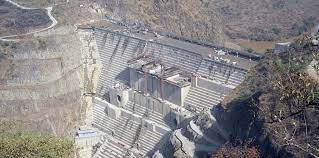
Another noteworthy dam project recently completed is the Gilgel Gibe III Dam located across the Omo Rivver also in Ethiopia. At a height of 243m, the high RCC dam with an associated hydroelectric power plant once fully commissioned will be the third largest hydroelectric plant in Africa with a power output of about 1870MW. The Gibe III dam as the name implies is part of the Gibe cascade and there is also on the drawing board the planned Gibe IV (1472 MW) and Gibe V (560MW) dams.
It is one of the largest infrastructure projects in the country and was officially inaugurated in December 2016.
Africa’s tallest arch dam (Tekezé Dam)
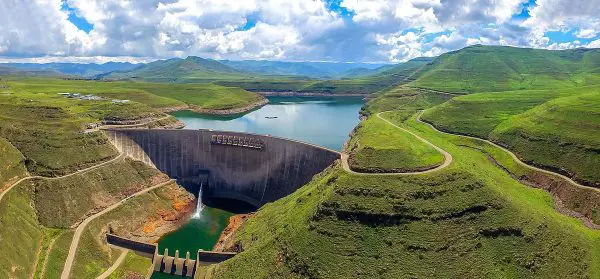
Still in Ethiopia the Tekezé Dam is a double-curvature arch dam located on the border of Amhara and Tigray region of Ethiopia. Situated on the Tekezé River, a tributary of the Nile that flows through one of the deepest canyons in the world the 188m Tekezé Dam is Africa’s largest double-curvature arch dam. The powerhouse contains four 75 MW turbines generating 300MW of electricity.
The world’s biggest man-made reservoir (Kariba Dam)
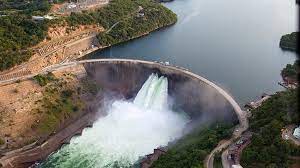
Kariba dam stands at stands 128 metres (420 ft) tall and 579 metres (1,900 ft) long. The dam forms Lake Kariba which extends for 280 kilometres (170 mi) and holds 185 cubic kilometres (150,000,000 acre•ft) of water. Two views of the dam as seen from Zimbabwe.
The construction of the Kariba Dam began in 1955 and was completed in 1959. It was a joint project between the governments of Zambia and Zimbabwe (then known as Northern Rhodesia and Southern Rhodesia, respectively) and was built by the contractor company, Impresit, an Italian consortium.
Plans to rehabilitate the dam started in 2014 after experts advised that it should be repaired after cracks emerged on its walls. Experts had warned that Africa’s largest man-made lake, which measures 226 kilometers long and in some places 40 kilometers wide, would collapse if nothing was done to repair it.
Rehabilitation works on the project include; reshaping of the plunge pool downstream of the dam wall, which commenced in 2017, and the rehabilitation of the spillway. The spillway consists of the six gates in the upper part of the concrete dam wall through which the ZRA releases water into the plunge pool to manage the reservoir water levels.
The Kariba dam rehabilitation project will ensure the dam is able to operate at its full capacity to international standards and that the installed power generation capacity of 1 830 MW.
Merowe Dam
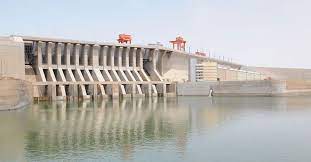
Downstream on the Nile less than a decade ago Sudan completed the Merowe Dam. The dam has a length of about 9km and a crest height of upto 67m. It consists of concrete-faced rockfill dams on each river bank. The planned generating capacity for the dam is 1250MW from 10 Francis turbines each having a capacity of 125MW.
Construction of the Merowe Dam began in 2004 and was completed in 2009. The dam was built with the primary purpose of generating electricity to meet Sudan’s growing energy demands and to provide a reliable source of power for industrial and domestic use.
Katse Dam

In Southern Africa the need to alleviate South Africa’s water crisis led to the construction of the Katse Dam, a concrete arch dam on the Malibamat’so River in Lesotho. The dam is Africa’s second largest double-curvature arch dam, second only to the Tekezé Dam and is part of the Lesotho Highlands Water Project, which will eventually include five large dams in remote rural areas.
The dam is just below the confluence of the Bokong River, which forms the western arm of the Katse reservoir. Water from the dam first travels through a 45km, 4m diameter tunnel, exiting at a hydroelectric station near Muela. The dam’s high elevation allows a gravity flow delivery system to South Africa, in addition to hydroelectric power for Lesotho, and was a prime reason behind the choice of site.
These massive infrastructure projects and others in various stages of planning that promise to transform millions of African lives have not come without generating controversy. Dams have come under heavy criticism in recent years because of their negative environmental impact that is illustrated by the displacement of communities and submerging large tracts of arable land. In addition their sustainability has come into question given changing weather patterns that render hydropower dependent countries without energy during droughts owing to empty reservoirs.
In addition in recent years conflict over water resources is raising the real threat of war between nations. The most notable being between Ethiopia and the Nile dependent countries of Sudan and Egypt who see their livelihoods threatened by the prospects of less water in the flood plains of the Nile.
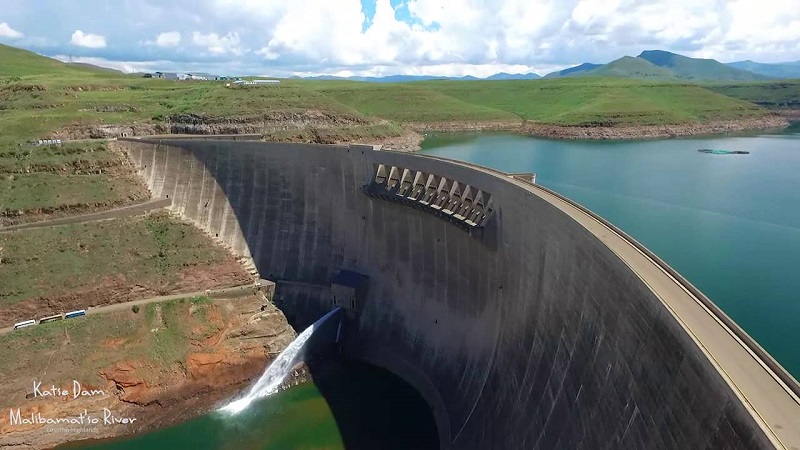

Thanks for this we will review the article.
This is so badly researched. These dams are small. The writer makes no mention of Kariba, at 181 billion m3, and by far the biggest dam by volume, does not even get a mention.